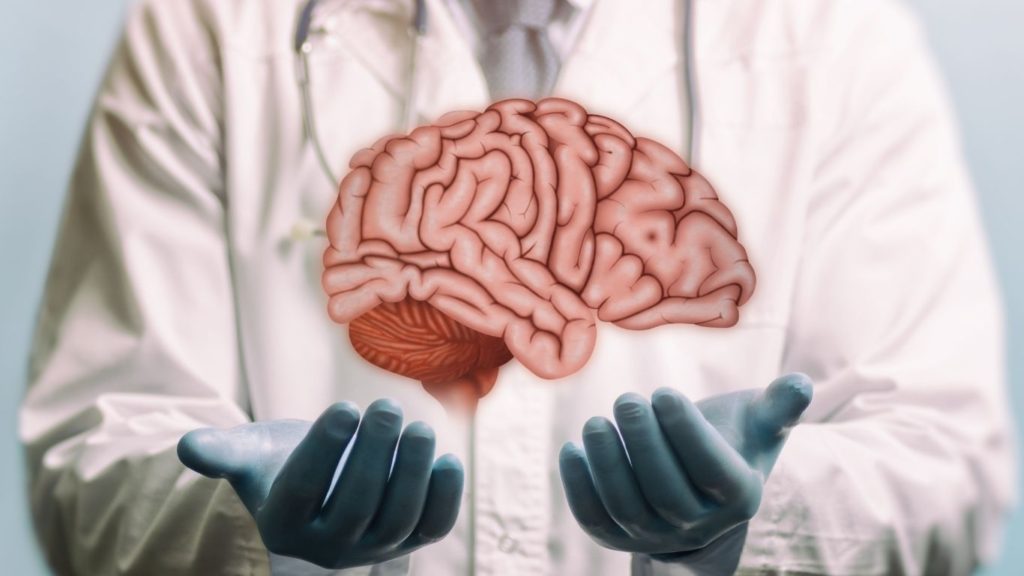March is not just a month for the arrival of spring; it’s also a time dedicated to raising awareness about brain injuries. Brain Injury Awareness Month provides an opportunity to shed light on a topic often shrouded in misconceptions and stigma. From traumatic brain injuries (TBIs) to acquired brain injuries (ABIs), the spectrum is vast, affecting millions of individuals worldwide. Keep reading as we look at the myths and facts surrounding brain injury awareness. Ultimately aiming to educate and empower readers to adopt a more supportive and informed community.
Myth #1: Brain Injuries Only Occur in High-Impact Situations
One of the most pervasive myths about brain injuries is that they only result from severe accidents or traumatic events such as car crashes or sports injuries. While these incidents certainly contribute to a significant portion of brain injuries, they are not the sole cause. In reality, brain injuries can occur in various ways, including falls, strokes, infections, tumors, and even seemingly minor blows to the head. Recognizing the diverse range of causes is crucial in understanding the prevalence of brain injuries and implementing preventive measures.
Fact: Brain Injuries Can Result from Everyday Incidents
Contrary to popular belief, brain injuries can stem from everyday occurrences that may seem harmless. For instance, slipping on a wet floor, bumping your head on a low ceiling, or sustaining repetitive concussions in contact sports can all lead to varying degrees of brain trauma. Acknowledging these less dramatic scenarios to emphasize the importance of safety precautions in our daily lives is essential.
Myth #2: Brain Injuries Always Manifest Visible Symptoms
Another common misconception is that brain injuries are always accompanied by visible symptoms such as loss of consciousness or physical disabilities. While these symptoms can certainly occur, they represent only a fraction of the potential effects of a brain injury. Many individuals may experience “invisible” symptoms, including cognitive impairments, emotional changes, and sensory disturbances, which are not immediately apparent to others.
Fact: Brain Injuries Can Have Invisible Symptoms
The reality is that brain injuries can manifest in countless ways, and not all of them are readily observable. Someone with a mild concussion may appear fine outwardly but could struggle with memory problems, difficulty concentrating, or mood swings. These invisible symptoms can significantly impact an individual’s daily functioning and quality of life, highlighting the importance of recognizing and addressing them promptly.
Myth #3: Recovery from Brain Injuries is Always Complete
There’s a prevailing belief that individuals who sustain brain injuries will eventually fully recover and return to their pre-injury selves. While some people do experience significant recovery with time and rehabilitation, the notion of complete restoration is unrealistic for many individuals. The extent of recovery depends on various factors, including the severity of the injury, the effectiveness of treatment, and the presence of any underlying conditions.
Fact: Brain Injury Recovery is Complex and Variable
Brain Injury awareness tells us that recovery from a brain injury is a complex and unpredictable journey, often characterized by ups and downs. While some individuals may regain most of their abilities, others may face long-term challenges and disabilities. Additionally, the recovery process can be influenced by factors such as age, overall health, and access to resources. It’s essential to approach each case with empathy and understanding, recognizing that recovery is a unique and individualized experience.
Myth #4: Brain Injuries Only Impact the Individual
A common misconception is that brain injuries only affect the individual who sustains the injury, overlooking the significant ripple effects on their families, caregivers, and communities. The repercussions of a brain injury extend far beyond the injured person, often requiring substantial adjustments and support from their social network.
Fact: Brain Injuries Have Far-Reaching Effects
Brain injuries can have profound effects on relationships, employment, finances, and overall quality of life for not only the individual but also their loved ones. Family members and caregivers may assume new roles and responsibilities, navigating unfamiliar challenges and coping with changes in their dynamics. Additionally, the economic burden of brain injuries, including medical expenses and lost productivity, can strain families and communities. Recognizing and addressing these broader impacts is essential in providing comprehensive support to those affected by brain injuries. Brain Injury Awareness Month focuses on creating awareness of these far-reaching effects on families dealing with brain injuries.
Brain Injury Awareness Month
As Brain Injury Awareness Month reminds us, dispelling myths and embracing facts is crucial in fostering understanding, compassion, and support for individuals living with brain injuries. By challenging misconceptions and raising awareness, we can create a more inclusive and supportive environment where those affected by brain injuries can thrive. Let us strive to educate ourselves and others, advocate for prevention and research, and ultimately, promote a culture of empathy and empowerment for all.
What Are the Symptoms of a Brain Injury?
The symptoms of a brain injury can vary widely depending on the severity and location of the injury. Common symptoms may include:
Physical Symptoms
These may include headaches, dizziness, nausea or vomiting, blurred vision, sensitivity to light or sound, fatigue, and difficulty sleeping.
Cognitive Symptoms
Brain injuries can affect cognitive function, leading to difficulties with memory, concentration, attention, and problem-solving. Individuals may also experience confusion, disorientation, and slowed thinking.
Emotional and Behavioral Changes
Brain injuries can impact mood regulation and behavior, resulting in mood swings, irritability, anxiety, depression, impulsivity, and aggression.
Sensory Symptoms
Some individuals may experience changes in sensory perception, such as ringing in the ears (tinnitus), changes in taste or smell, and altered sensitivity to touch or temperature.
Communication and Language Difficulties
Brain injuries can affect communication skills, leading to problems with speech, language comprehension, and expression. This may manifest as difficulty finding words, slurred speech, or trouble understanding others.
Motor Impairments
Depending on the location of the injury, individuals may experience weakness or paralysis in certain parts of the body, coordination problems, tremors, or difficulties with balance and walking.
Seizures
In some cases, brain injuries can trigger seizures, which may involve convulsions, loss of consciousness, or unusual sensations. It’s important to note that symptoms may not always be immediately apparent, and they can evolve or worsen over time. If you or someone you know experiences any of these symptoms following a head injury or trauma, it’s essential to seek medical attention promptly for proper evaluation and treatment. Early intervention can significantly impact the outcome and facilitate recovery from a brain injury.
How Are Brain Injuries Diagnosed?
Brain injuries are diagnosed through a combination of medical assessments, physical examinations, and diagnostic tests. The diagnostic process typically involves the following steps:
Medical History Assessment
The healthcare provider will conduct a thorough review of the individual’s medical history, including any previous head injuries, medical conditions, and symptoms experienced. Information about the circumstances surrounding the injury, such as the cause and severity of the trauma, is also important in the diagnostic process.
Physical Examination
A comprehensive physical examination will be performed to assess neurological function, including tests of reflexes, strength, coordination, balance, and sensation. The healthcare provider will also evaluate cognitive function, such as memory, attention, language, and problem-solving abilities.
Neurological Evaluation
A specialized neurological evaluation may be conducted to further assess brain function. This may involve tests to evaluate mental status, cranial nerve function, motor function, sensory function, and coordination.
Imaging Tests After A Brain Injury
Diagnostic imaging tests, such as computed tomography (CT) scans and magnetic resonance imaging (MRI) scans, are often used to visualize the brain and identify any abnormalities or injuries. CT scans are particularly useful for detecting acute bleeding or skull fractures, while MRI scans provide more detailed images of brain tissue and can detect subtle changes.
Cognitive Assessments After a Brain Injury
Cognitive assessments may be administered to evaluate specific cognitive functions, such as memory, attention, processing speed, and executive function. These assessments help to identify cognitive impairments and guide treatment planning.
Additional Tests
Depending on the specific symptoms and suspected underlying causes, additional tests may be ordered, such as electroencephalography (EEG) to detect abnormal brain activity, neuropsychological testing to assess cognitive function in more detail, or blood tests to rule out other medical conditions.
The combination of these diagnostic approaches allows healthcare providers to accurately diagnose brain injuries, determine the severity and extent of the injury, and develop an appropriate treatment plan tailored to the individual’s needs. Early diagnosis and intervention are critical in optimizing outcomes and facilitating recovery from brain injuries.
What Is the Prognosis for Someone with a Brain Injury
The prognosis for someone with a brain injury varies widely depending on several factors, including the type, severity, and location of the injury, as well as individual characteristics such as age, overall health, and access to treatment and rehabilitation services. Here are some key factors that influence the prognosis for individuals with brain injuries:
Severity of the Injury
The severity of a brain injury can range from mild (concussion) to severe (traumatic brain injury), with varying degrees of impairment and recovery potential. Generally, individuals with mild brain injuries tend to have better prognoses and may fully recover with time and appropriate management, while those with moderate to severe injuries may experience long-term disabilities and functional impairments.
The Extent of Damage
The extent of damage to the brain tissue and structures can significantly impact prognosis. Severe injuries involving widespread damage or structural changes in critical areas of the brain may result in more profound and lasting deficits compared to milder injuries.
Presence of Complications
Complications such as hemorrhage, infection, seizures, or increased intracranial pressure can complicate the recovery process and affect prognosis. Prompt recognition and management of complications are essential for optimizing outcomes.
Age and Health Status After a Brain Injury
Younger individuals and those in good overall health generally have better prognoses for recovery from brain injuries due to greater resilience and adaptive capacity. Conversely, older adults or individuals with pre-existing medical conditions may face additional challenges in recovery and may have a more guarded prognosis.
Rehabilitation and Support Services
Access to comprehensive rehabilitation services, including physical therapy, occupational therapy, speech therapy, cognitive rehabilitation, and psychosocial support, plays a crucial role in the recovery process. The availability and quality of rehabilitation services can significantly influence functional outcomes and long-term prognosis after a brain injury.
Individual Factors and Support Systems During Brain Injury Awareness
Factors such as motivation, resilience, social support, and coping skills can impact an individual’s ability to adapt to and cope with the consequences of a brain injury. Strong support systems and access to resources can facilitate recovery and improve overall prognosis.
Seek Legal Guidance for Your Brain Injury Recovery Journey with Our Westlake Village Attorney
If you or a loved one has suffered a brain injury, it’s critical to seek legal assistance from a knowledgeable and experienced Westlake Village Brain Injury Attorney. Dealing with the aftermath of a brain injury can be overwhelming, with medical bills piling up, rehabilitation needs, and potential long-term consequences affecting your quality of life. At Vititoe Law Group, we understand the complexities of brain injury cases and are dedicated to advocating for your rights and securing the compensation you deserve. We will diligently investigate your case, consult with medical experts, and navigate the legal process on your behalf, allowing you to focus on your recovery. Don’t hesitate to reach out for a consultation, as time is of the essence in pursuing justice and securing your future. Your well-being is our priority, and we are here to provide the support and guidance you need during this challenging time.








